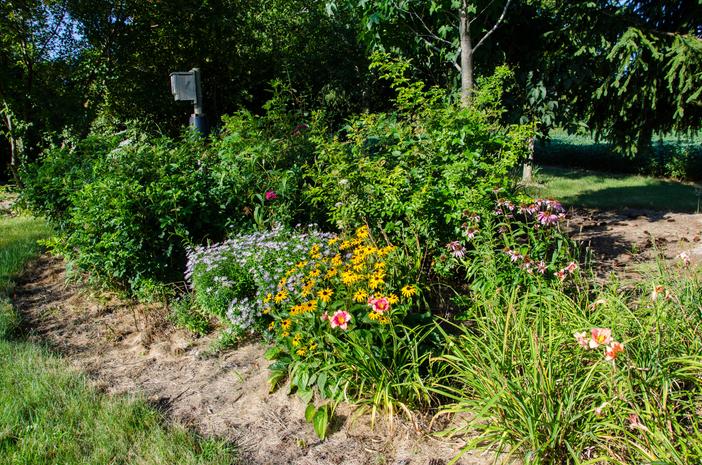False Chamomile
(Boltonia asteroides var. latisquama)
False Chamomile (Boltonia asteroides var. latisquama)
/
/

F. D. Richards
CC BY-SA 2.0
Image By:
F. D. Richards
Recorded By:
Copyright:
CC BY-SA 2.0
Copyright Notice:
Photo by: F. D. Richards | License Type: CC BY-SA 2.0 | License URL: https://creativecommons.org/licenses/by-sa/2.0 | Uploader: Lệ Xuân | Publisher: Wikipedia Commons

Estimated Native Range
Summary
Boltonia asteroides var. latisquama, commonly known as False Chamomile or False Aster, is a perennial herb that thrives in the native habitat of moist meadows, wetland margins, and along the shores of rivers and ponds in Eastern and Central North America. It typically grows at a moderate rate to a height of 3-6 feet (0.9-1.8 meters) and a width of 2.5-3 feet (0.8-0.9 meters). This plant features lance-shaped leaves and branching stems topped with numerous daisy-like flowers, which are white to pale pink with yellow centers. The flowers are quite showy, blooming profusely from late summer to fall, attracting butterflies and other pollinators.
False Chamomile is valued for its late-season blooms and ability to adapt to wet conditions, making it an excellent choice for rain gardens, water edges, and naturalized areas. It is also used in perennial borders for its height and floral display. In cultivation, it prefers full sun to part shade and can tolerate a range of soil types, including clay, loam, or sandy soils, provided they have medium to slow drainage. It requires medium to high amounts of water, reflecting its natural affinity for moist environments. While generally low-maintenance, it may require staking in rich soils to prevent flopping. Potential problems include powdery mildew and rust, especially in humid conditions or when airflow is poor.CC BY-SA 4.0
False Chamomile is valued for its late-season blooms and ability to adapt to wet conditions, making it an excellent choice for rain gardens, water edges, and naturalized areas. It is also used in perennial borders for its height and floral display. In cultivation, it prefers full sun to part shade and can tolerate a range of soil types, including clay, loam, or sandy soils, provided they have medium to slow drainage. It requires medium to high amounts of water, reflecting its natural affinity for moist environments. While generally low-maintenance, it may require staking in rich soils to prevent flopping. Potential problems include powdery mildew and rust, especially in humid conditions or when airflow is poor.CC BY-SA 4.0
Plant Description
- Plant Type: Herb
- Height: 3-6 feet
- Width: 2.5-3 feet
- Growth Rate: Moderate
- Flower Color: Pink, White
- Flowering Season: Summer, Fall
- Leaf Retention: Deciduous
Growth Requirements
- Sun: Full Sun, Part Shade
- Water: Medium, High
- Drainage: Medium, Slow
Common Uses
Border Plant, Butterfly Garden, Low Maintenance, Water Garden
Natural Habitat
Moist meadows, wetland margins, and along the shores of rivers and ponds in Eastern and Central North America
Other Names
Common Names: False Chamomile , False Aster , Bolton’s Aster
Scientific Names: Boltonia asteroides var. latisquama , Boltonia latisquama , Boltonia latisquama var. latisquama
GBIF Accepted Name: